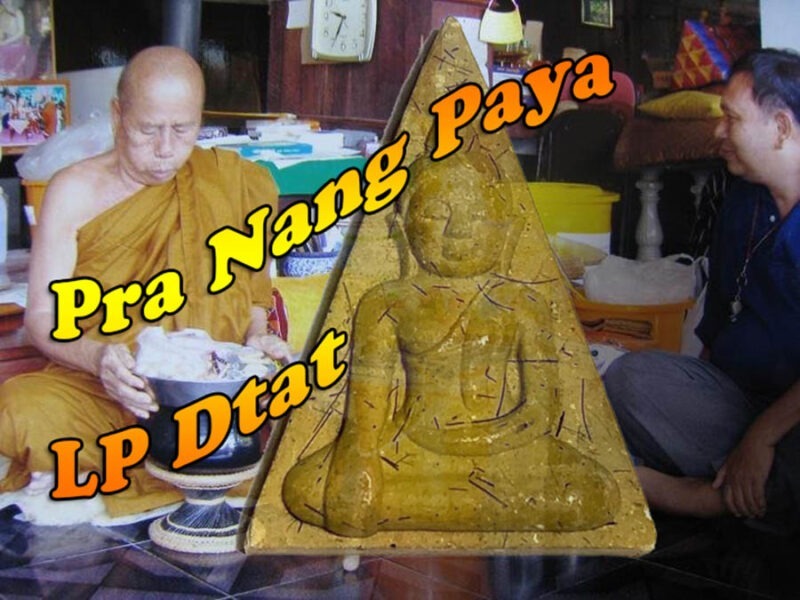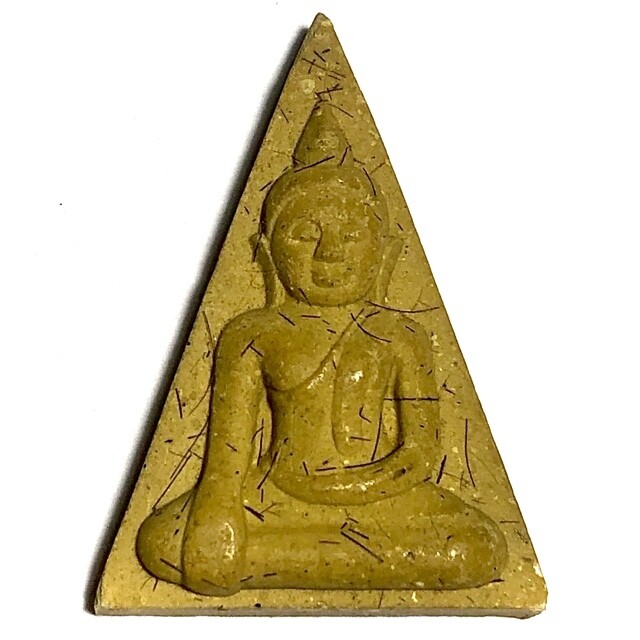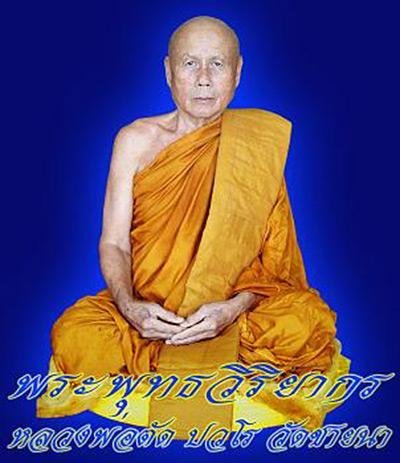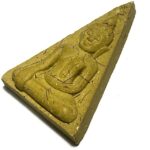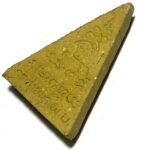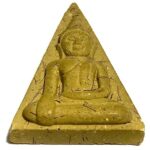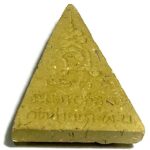Pra Nang Paya Nuea Khamin Sek Dtid Gesa Luang Por Dtat; A Rare and Sacred Benjapakee Amulet
In the heart of Thai Buddhist history lies a treasure that transcends time, carrying with it the essence of spirituality and revered wisdom. The Pra Nang Paya Benjapakee amulet, this exhibit being the first edition Pra Nang Paya amulet, by the venerable Luang Por Dtat of Wat Chai Na in the auspicious year 2543, is a perfect example of the sacred craftsmanship and spiritual significance deeply embedded in Thai culture. Craftedand empowered by the esteemed Luang Por Dtat of Wat Chai Na in the auspicious year 2543 B.E., the Pra Nang Paya amulet emerges as a petite yet powerful symbol of prosperity and elevated status.
At the core of this remarkable amulet is a meticulously concocted blend of Sacred Turmeric Powder, known locally as “ผงขมิ้น,” meticulously mixed with the revered hairs (“Gesa”) of the Great Monk Luang Por Dtat. This amalgamation, a fusion of sacred elements, holds a profound spiritual energy that resonates with the devotees and collectors alike.
The triangular shape of the amulet, bearing the iconic seated Buddha imprint on the front in a Māra Vijaya posture (Calling Dharani Goddess by touching the earth with his hand, to witness his Merits as higher than those of the Māra), serves as a visual testament to the divine craftsmanship. On the reverse side, the imprint features a prominent devotee at the top, followed by the characters “ธาตุ๔” (Na, Ma, Pha, Tha), and beneath them, the inscription “หัวใจพระเจ้าห้าพระองค์, แม่ธาตุใหญ๋” (Na, Mo, Phut, Tha, Ya).
Beyond its aesthetic allure, the Pra Nang Paya amulet is infused with the spiritual virtues of compassion, popularity, success in business, and protection against adversities. Devotees believe that the amulet holds the power to guide them through life’s challenges, evoking a sense of mettā (loving-kindness) and overcoming obstacles with grace.
This sacred charm intertwines Sacred Turmeric Powder, locally known as “ผงขมิ้น,” with the revered hairs (“Gesa”) of the Great Monk Luang Por Dtat. The result is a potent blend of sacred elements, resonating with devotees and collectors alike.
While the amulet features a small triangular shape with a seated Buddha imprint on the front, its name, “Nang Paya,” is a nod to its size and reputation. Traditionally associated with women, this amulet serves as a conduit to heightened luck, success, and elevated status, akin to becoming a “Nang Paya” — a lady of high regard.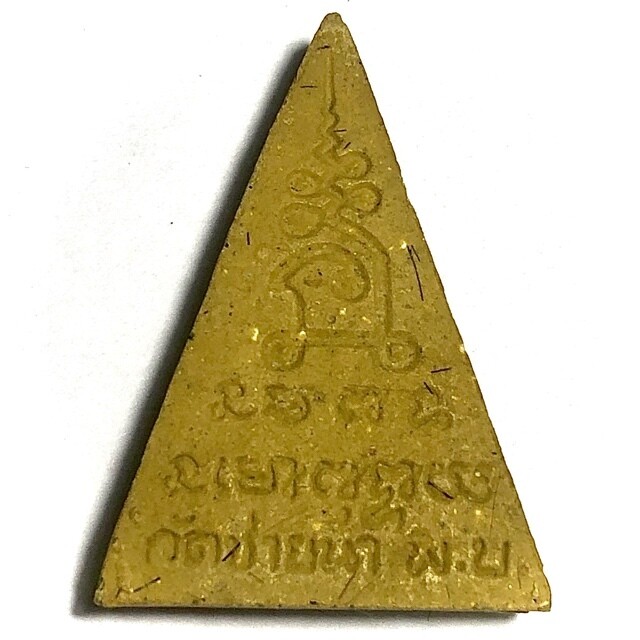
On the reverse side, the amulet boasts an imprint featuring a prominent devotee, characters “ธาตุ๔” (Na, Ma, Pha, Tha), and the inscription “หัวใจพระเจ้าห้าพระองค์, แม่ธาตุใหญ๋” (Na, Mo, Phut, Tha, Ya). Beyond its visual appeal, the Pra Nang Paya amulet is renowned for its ability to attract wealth, business success, and provide protection. Devotees believe that wearing this amulet guides them through life’s challenges, fostering mettā (loving-kindness) and helping overcome obstacles gracefully.
The intentional inclusion of Great Monk Luang Por Dtat’s hairs adds a unique dimension, creating a channel for Gurunussati — a profound remembrance of the Guru — strengthening the wearer’s spiritual connection. Owning the Pra Nang Paya amulet is an invitation to connect with Thai Buddhist heritage, a symbol of prosperity and spirituality. Its rarity and sacred essence elevate this amulet to unparalleled significance. Wear it with reverence, allowing the Pra Nang Paya to guide you towards prosperity, success, and a life of elevated status.
Kata Maha Ud Luang Por Dtat
Na Ud Mō Ad Na Mō Put Tā Yad Dtan Eu U Sa Ha Sa Bpa Sa U
A Ni Tas Sa Na Ab Bpa Dti Kā
A Ni Tas Sa Na Ab Bpa Dti Kā Dtā
A Ni Tas Sa Na Ab Bpa Dti Kā Dtā Ya
Na Mō Put Tā Ya Na Ma Pa Ta
Then Pray to the Takrut with the Following;
Puttang Ārātanānang Tammang Ārātanānang Sangkang Ārātanānang Agkhara Yandtang Ārātanānang Pra Put Ta Kun Nang, Pra Tam Ma Kun Nang, Pra Sang Ka Kun Nang Bpidtā Kun Nang Mādtā Kun Nang Krū Ājariyākunnang
Putta Būchā Bpādti Hārō Agkhara Yandtang I Dti Wi Sē Sa Bpa Dti Rūbpang Imang Gāya Pan Ta Nang A Ti Thā Mi
